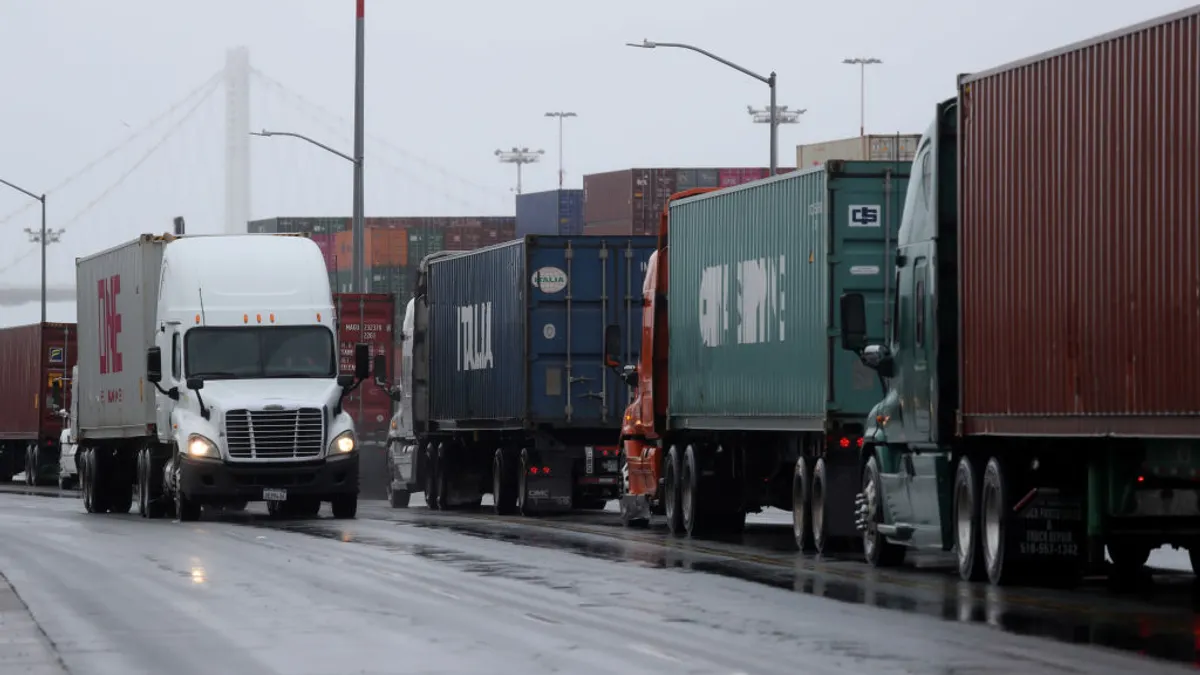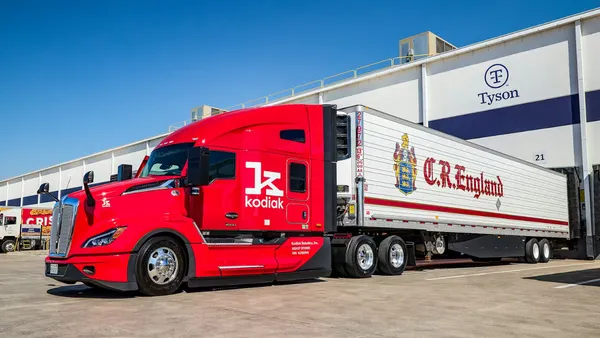Dive Brief:
- NFI is hiring 5,000 people over the next few months in response to demands from e-commerce and a growing freight economy, according to a Tuesday news release. NFI said its business is expanding despite the onset of the COVID-19 pandemic in North America.
- The company said it continues to expand its transportation network and is recruiting CDL-A drivers, in addition to warehouse, corporate, maintenance, and other roles.
- NFI operates more than 4,500 tractors, and focuses on drayage and dedicated carriage. The company has 13,100 employees, and 350 locations with more than 50 million square feet of warehouse space. It makes about $2 billion in revenues.
Dive Insight:
NFI's announcement signals that e-commerce and inventory restocks are well underway, and it is one of the latest proof points that the freight economy is improving.
It comes only days after the U.S. Bureau of Labor Statistics reported preliminary numbers showing warehouse employment surpassed its pre-pandemic level to reach the highest level recorded, with 1.25 million workers in the warehouse and storage sector in September.
Dean Croke, DAT principal analyst, said e-commerce has caused many logistics companies to add warehouses closer to consumer populations. Croke is studying the link between the new warehouses and rates, as he says the spot market is still sorting out the rates for trips to such locations — a process called "new rate development." As Croke looks over what were once safely considered backhaul lanes out of Boston, he is astounded by the upward rate changes. Boston is usually an inbound market, but lately he has seen higher reefer rates out of Boston.
"I've bever seen a backhaul market have that much increase," said Croke.
NFI noted it was hiring for warehouses in such major consumer markets as Southern California, the Lehigh Valley in Pennsylvania, Dallas-Fort Worth, and the Chicago suburb of Minooka, Illinois, among others.
E-commerce was seen as a relief from COVID-19-related economic woes, but one analyst believes the pandemic is also another reason, along with online shopping, for the rebound in freight and warehousing, even as the pandemic initially shuttered large numbers of businesses and schools in the spring. The reason is the pandemic depleted inventories.
"The pandemic accelerated the recovery in the freight cycle," said Tim Denoyer, ACT Research vice president and senior analyst. "What's going on is a big restock."
The pandemic-related demand initially led to panic-buying, which led to high truck demand in March. After that panic-buying subsided, spot rates plummeted, but consumers continued to pick at the shelves and to use computers to shop. This lead to a big need for inventories to restock and for more warehouse work.
Consumer demand has caused a capacity tightening in trucking, and has led to higher TL and intermodal spot rates. Truckload spot rates have jumped by double digits in a year's time. For dry van, September's rates were up 28.7% from September 2019, according to DAT's Trendlines.
Fleets are also restocking their parking lots. Wards Intelligence reported that Class 8 truck sales came in above 19,000 in September. The numbers are an improvement from April, when fleets made 4,275 Class 8 orders, according to ACT Research data.








